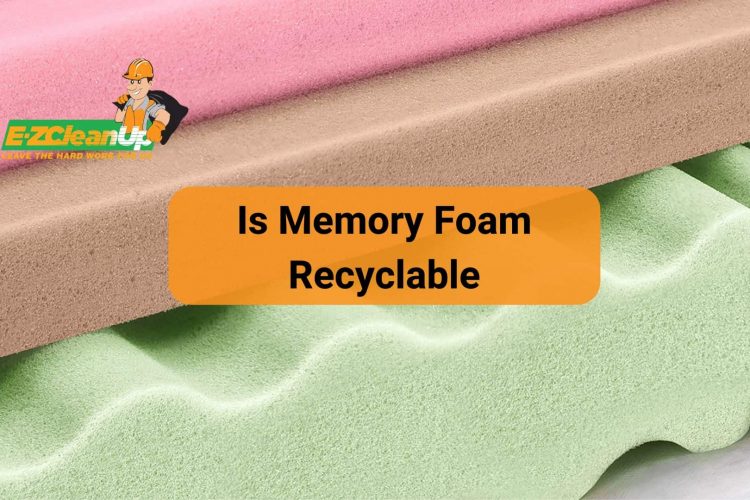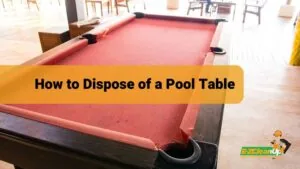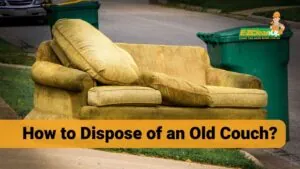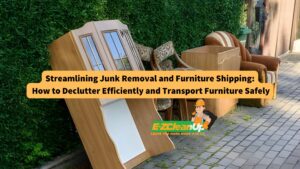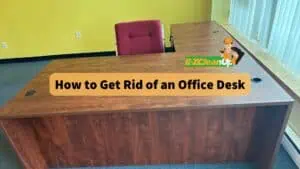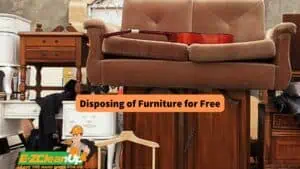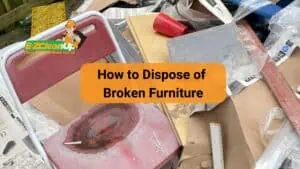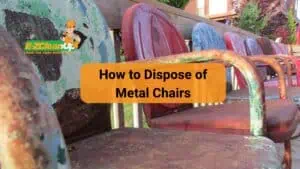Memory foam is hard to recycle due to its makeup, but specialized programs can repurpose it for uses like carpet padding. Recycling options are limited, which highlights the need for sustainable alternatives.
Let’s learn the details to understand more about the answer to “Is memory foam recyclable?” in the article below.
Memory Foam Recycling Process
Memory foam is not easily recyclable due to its chemical composition and the way it’s made. This makes it difficult to break down or repurpose it in a straightforward manner. However, there are specialized facilities and recycling programs that can repurpose it for things like carpet underlay or padding in various products.
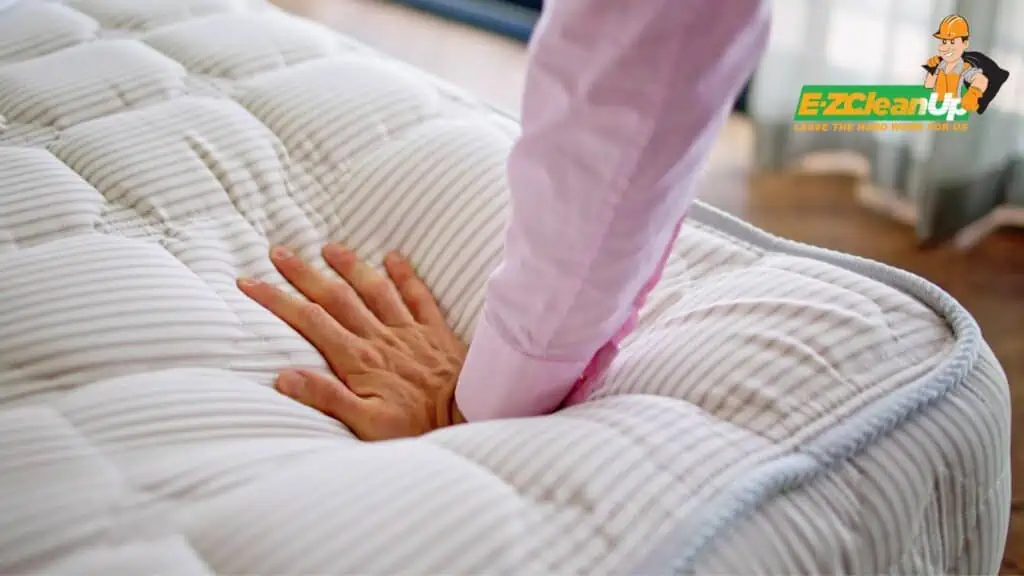
Efforts to recycle memory foam often require innovative approaches to ensure it doesn’t end up in landfills. This emphasizes the need for more sustainable materials and recycling methods. While challenging, recycling memory foam can be done, a process that involves the following steps:
Preliminary Sorting and Cleaning
Initially, memory foam products must be sorted and cleaned. This step is fundamental, especially when recycling memory foam mattresses, as they may contain other materials like fabric and metal springs, which need separate processing.
The memory foam itself is a type of polyurethane, a plastic polymer, making it a challenge to recycle in the traditional sense. This preliminary stage ensures that the foam is free from contaminants and ready for further processing.
Grinding and Shredding of Memory Foam Materials
Once sorted and cleaned, the memory foam is then ground and shredded into smaller pieces. This process facilitates easier handling and transportation of the foam for its next life. It’s a critical step for converting the memory foam into a form that can be used as raw material for creating new products.
The shredded foam might find its way into products like carpet underlays, furniture cushions, or even industrial shock absorbers. This showcases the versatility of recycled memory foam.
Chemical Breakdown and Repurposing
Although memory foam cannot be broken down back into its original plastic polymer form, it can be repurposed into other foam products. The challenge here lies in the economic and labor-intensive process of reclaiming memory foam, as virgin polyurethane can be produced relatively cheaply.
However, innovative recycling facilities have found ways to breathe new life into this material. While the market for reclaimed memory foam might be limited due to the cost of recycling compared to producing new polyurethane foam, efforts continue to improve the recycling process.
This includes legislation in some states that has established mattress recycling programs, although more widespread solutions are needed.
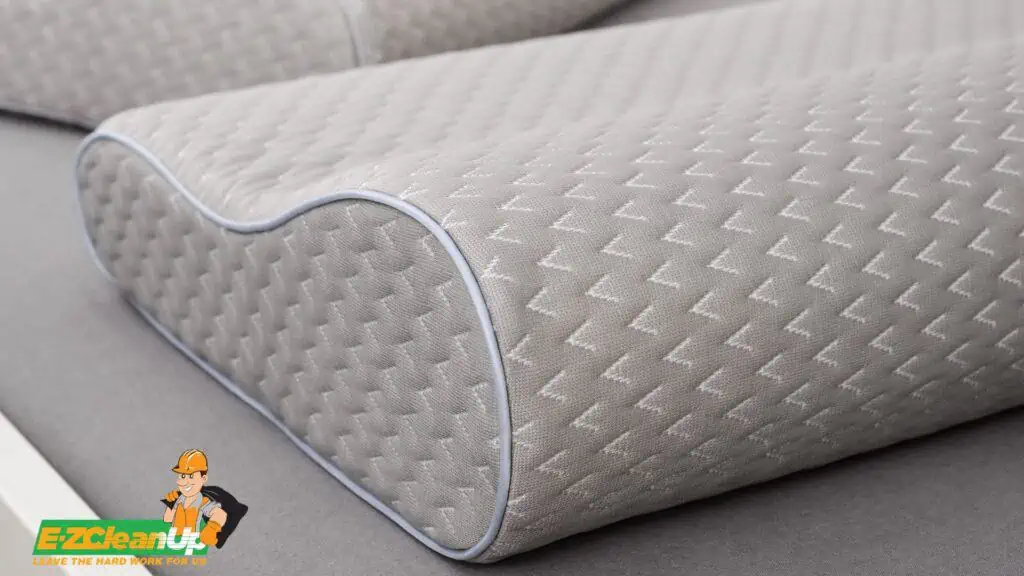
Challenges in Recycling Memory Foam
The obstacles to recycling memory foam stem from the material’s inherent properties, its chemical makeup, and the current limitations of recycling technologies and facilities.
Durability and Longevity of Memory Foam
Memory foam is prized for its durability and comfort, characteristics that extend its life span significantly. While these qualities are beneficial during use, they present challenges at the end of the material’s life cycle.
The very resilience that makes memory foam mattresses and pillows supportive over many years also makes them difficult to break down and recycle efficiently.
Chemical Composition and Environmental Concerns
Polyurethane foam, the primary component of memory foam, is a petrochemical product with an open cellular structure. This composition complicates recycling efforts because polyurethane cannot be easily reverted to its original polymer form for repurposing.
Additionally, memory foam often contains other chemicals, such as fire retardants, which pose further challenges to recycling. The complexity of the material at the molecular level hinders both mechanical and chemical recycling processes. These require advanced technologies that are not widely available or economically viable at present.
Limited Recycling Facilities and Technology
The infrastructure for recycling memory foam is underdeveloped, with few facilities equipped to handle this specific material. Mechanical recycling, which involves shredding the foam into smaller pieces, and chemical recycling, which breaks down the foam into its basic chemical components, are both limited by the availability of specialized equipment and technology.
Economic considerations make the situation worse because they can make developing specialized recycling programs less appealing. This is because the costs of recycling memory foam can outweigh the advantages. As a result, much of the discarded memory foam ends up in landfills.
Addressing these challenges requires a multi-faceted approach. These include the development of new recycling technologies, increased investment in recycling infrastructure, and greater emphasis on the principles of the circular economy.
Efforts such as the $1.8 million grant from the National Science Foundation to Virginia Tech and Arizona State University highlight ongoing research aimed at overcoming the barriers to recycling polyurethane foams.
By focusing on life cycle thinking and engaging with stakeholders to create viable systems for recovering, recycling, and redistributing polyurethane materials, there is hope for developing sustainable solutions to manage memory foam waste more effectively.
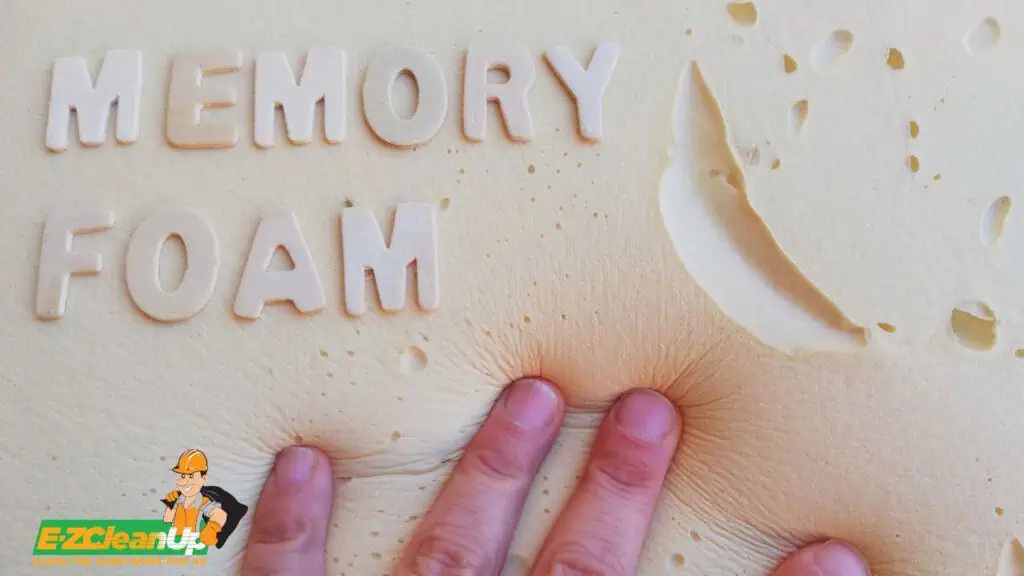
Benefits of Recycling Memory Foam
Recycling memory foam offers an array of benefits. By understanding these advantages, we can appreciate the importance of recycling practices for such materials.
Environmental Impact Reduction
Recycling memory foam plays a crucial role in mitigating the environmental impact associated with waste disposal. Landfills, already overflowing, receive a substantial amount of waste from discarded mattresses every year.
Memory foam’s materials, often non-biodegradable, occupy landfill space for decades, if not centuries. Recycling these materials helps reduce the carbon footprint, conserves landfill space, and prevents potential soil and groundwater pollution from chemical leachate.
Conservation of Resources
Mattresses contain materials like steel, wood, and foam, which can be repurposed into new products. This saves water, conserves energy, and reduces greenhouse gas emissions. For instance, polyurethane foam, a primary component of memory foam, can be recycled into carpet underlay or animal bedding.
New Products from Recycled Foam
The recycling of memory foam facilitates the creation of new products. Once a mattress is deconstructed, its components can be repurposed for various applications, such as making new items from melted springs and coils, using shredded foam in carpet padding, or transforming fibers and fabrics into industrial filters or acoustic paneling.
This not only showcases the versatility of recycled materials but also drives innovation in product development. The move offers a sustainable alternative to the production of new materials.
Alternatives to Memory Foam Recycling
Exploring alternatives to recycling memory foam aligns with eco-friendly practices and opens up innovative avenues for extending the utility of this versatile material. Here’s a guide to understanding various options:
Donation and Reuse Options
If your memory foam products are still in good condition, consider donating them. Organizations such as the Salvation Army, Goodwill Industries, and local charities often welcome lightly used mattresses and bedding items. Some of these organizations accept mattresses with fire labels and offer free collection. Such acts not only extend the lifespan of these products but also support community welfare.
Upcycling Ideas for Old Memory Foam
Memory foam’s cushioning properties make it ideal for various upcycling projects. You can transform old memory foam bedding into pet beds, garden kneelers, or even lumbar support for chairs.
Cutting the foam into smaller pieces can also fill beanbag chairs or serve as floor cushions. This approach diverts waste from landfills while providing functional items for home use.
Bio-based and Eco-friendly Alternatives
For those considering more sustainable alternatives to traditional memory foam, materials like natural latex foam, soy-based foam, and other biodegradable options offer an eco-friendly solution.
Natural latex, for example, is renewable, biodegradable, and free from harmful chemicals. It maintains the comfort properties of traditional foam while reducing its environmental impact.
Recycled and upcycled materials, such as foam made from recycled post-consumer waste or ocean plastics, also present an opportunity to minimize ecological footprints and support a circular economy.
How to Dispose of Memory Foam Responsibly
There are several responsible disposal methods to consider that can minimize the environmental impact of memory foams.
Identifying Local Recycling Centers and Programs
Your first step should be to look into local waste collection programs. Some areas offer bulky waste pickups that can accommodate items like memory foam mattresses.
Additionally, recycling centers are often equipped to process materials like memory foam. They can repurpose it into new products. You might be surprised to learn that over 80 percent of a mattress can be recycled, with components being reused in various ways.
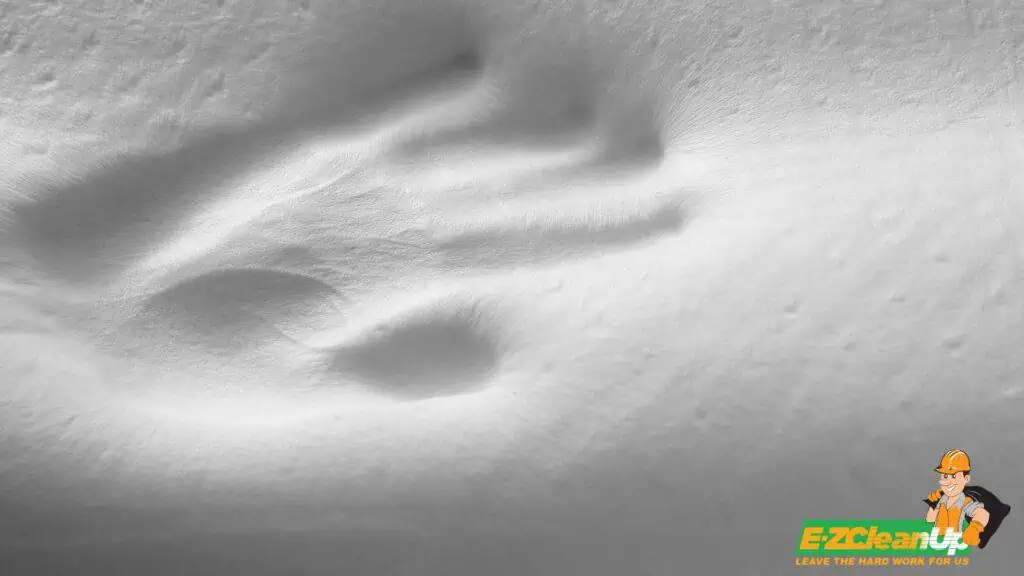
Contacting Specialized Recycling Services
If your mattress is still in good condition, think about donating it. Many charities refurbish and provide these to those in need. This option not only extends the life of the mattress but also aids individuals and families within your community.
Alternatively, some mattress brands offer return and recycling programs for their products. It’s worth inquiring with the manufacturer or retailer from whom you purchased the mattress or topper. They might facilitate eco-friendly disposal or even offer a buy-back program.
Contacting Professional Junk Removal Services
Professional junk removal companies like us at EZ CleanUp are often knowledgeable about local recycling protocols. We have partnerships with facilities that can recycle or repurpose memory foam and other components of mattresses.
We also prioritize eco-friendly practices, so you can be assured that your memory foam is disposed of in a way that minimizes its environmental impact. These services can be particularly helpful for large items or when you’re dealing with multiple pieces of memory foam, providing an efficient and hassle-free solution to disposal challenges.
Role of Consumers in Memory Foam Recycling
The role consumers play in the recycling of memory foam is critical, touching on aspects of purchasing decisions, awareness, and advocacy. Here’s how individuals can contribute to a more sustainable use and disposal of memory foam products:
Purchasing Decisions and Selecting Eco-Friendly Products
Consumers have the power to influence the market through their purchasing decisions. Opting for memory foam products that utilize green manufacturing processes, incorporate renewable resources, or hold certifications like CertiPUR-US or GREENGUARD Gold ensures lower environmental impact and safer ingredients.
These products are designed with sustainability in mind. They potentially offer better recyclability, which reduces the reliance on non-renewable, petroleum-based materials.
Awareness and Participation in Recycling Programs
Being informed about and participating in recycling programs can significantly mitigate the environmental impact of memory foam disposal. For instance, consumers can find local recycling centers or programs like Bye Bye Mattress in specific states.
They ensure that memory foam products are recycled rather than ending up in landfills. These programs may dismantle the mattress, which allows its materials to be reused in various forms. Through this means, resources are maximized and waste is minimized.
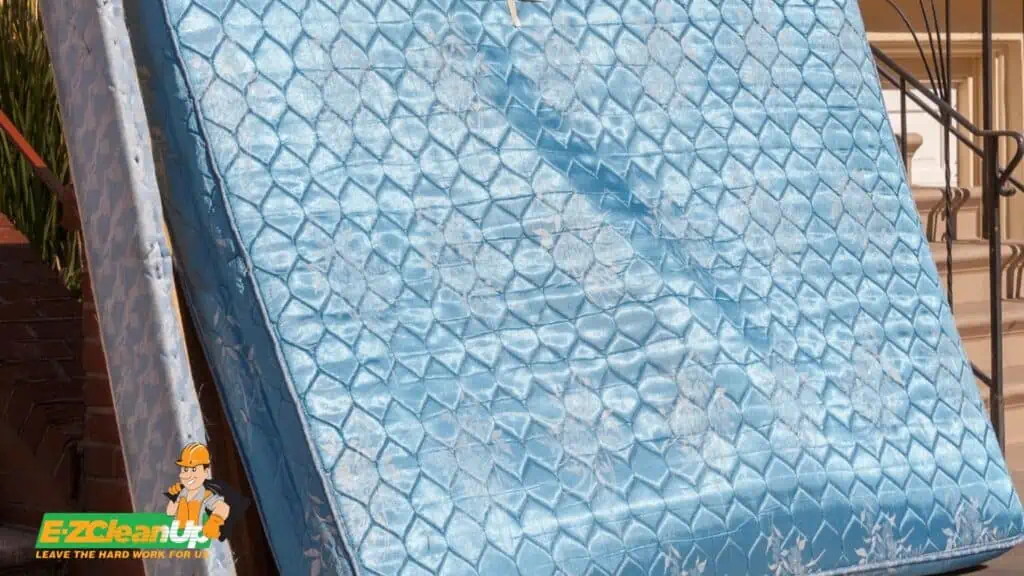
Advocacy for Improved Recycling Processes and Facilities
Consumer advocacy plays a pivotal role in promoting the development of more efficient recycling processes and facilities. By supporting legislation that encourages mattress recycling and demanding better recycling services from manufacturers and retailers, consumers can help improve the infrastructure for recycling memory foam products.
This can lead to advancements in recycling technologies, which make the process more cost-effective and accessible. As a result, it reduces the overall environmental footprint of these products.
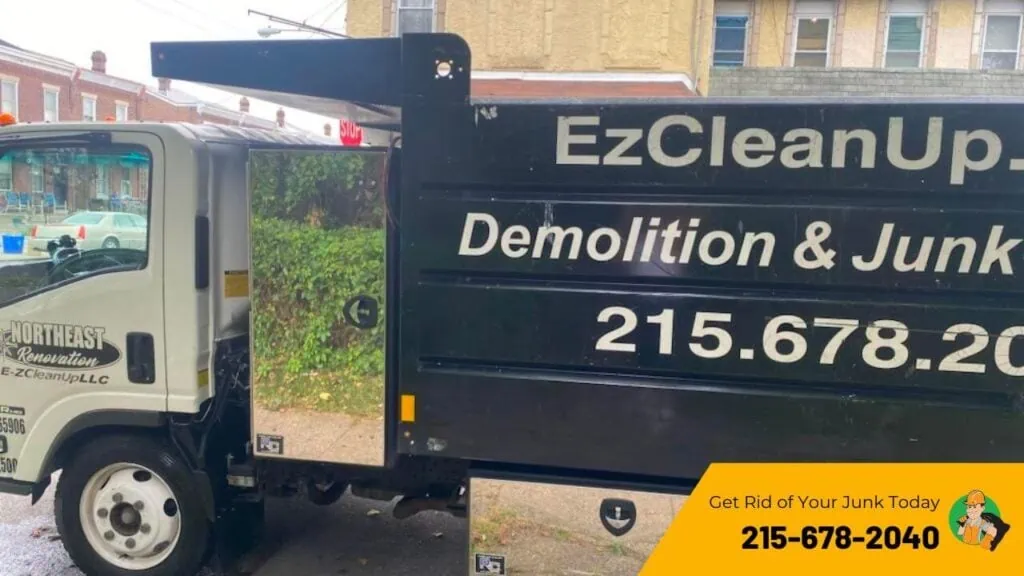
Beyond the Bin: Memory Foam Disposal Solutions
The challenge of memory foam disposal is that it can clutter more than just your space. EZ CleanUp provides the clarity and service you need by removing your junk with environmental consciousness and hassle-free.
We specialize in efficient junk removal, including memory foam. Contact us if you need easy, responsible disposal solutions.

